While the line "a dingo ate my baby" became an international punchline, it actually comes from a heartbreaking case in which an Australian woman was wrongfully convicted of murder after a dingo killed her child.
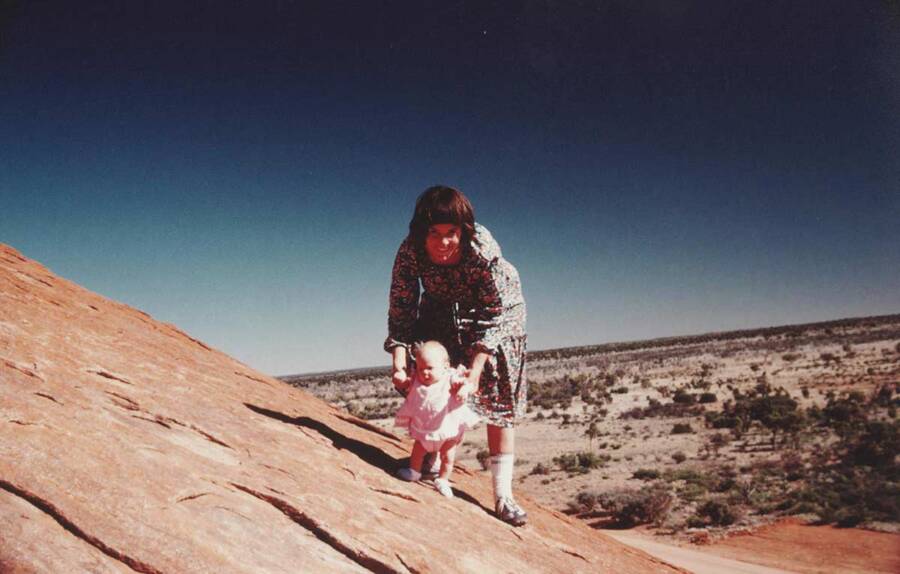
National Museum AustraliaAzaria Chamberlain, the baby behind the “dingo ate my baby” scandal, with her mother, Lindy Chamberlain.
In a 1991 episode of Seinfeld, the character Elaine, trapped in a boring conversation with another woman, utters an iconic line: “Maybe the dingo ate your baby.” The quip may have seemed nonsensical, especially to Americans unfamiliar with dingos. But it was actually based on a true event.
Eleven years earlier, a nine-week-old baby disappeared from a campsite in Australia shortly after her mother saw a dingo (a wild dog) leaving their tent. The mother’s anguished cry — “A dingo’s got my baby!” — then became a cultural juggernaut, as investigators in Australia sought to determine if the baby had been killed by a dingo or murdered by her own mother.
The mystery of baby Azaria Chamberlain’s death consumed the country — and beyond. But it would not come to a conclusion until 1986, when a chance discovery revealed the truth of what happened.
Inside The Mysterious Disappearance Of Azaria Chamberlain At Ayers Rock
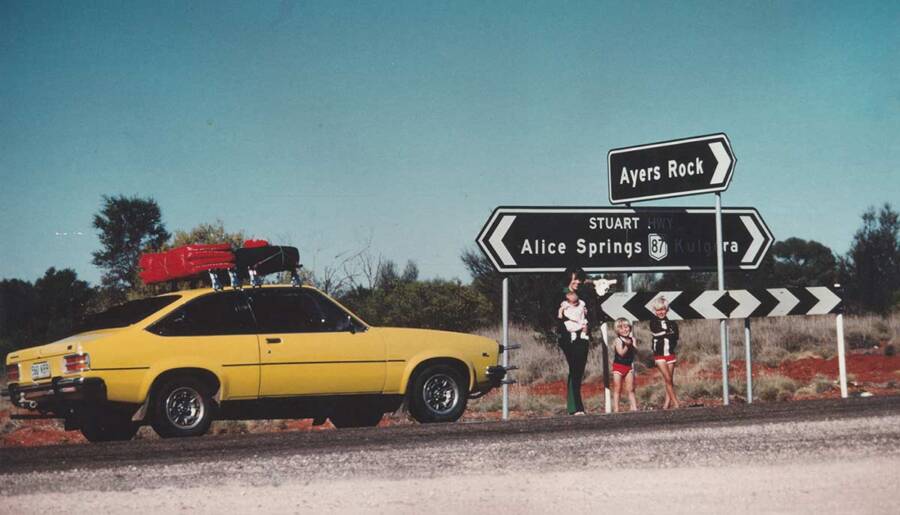
National Museum AustraliaThe Chamberlains before Azaria’s disappearance. The sign for Ayers Rock is visible over their heads.
The tragedy behind “dingo ate my baby” began on Aug. 16, 1980, when Michael and Lindy Chamberlain arrived at Uluru (then Ayers Rock) for a camping trip with their three children: Aiden, Reagan, and baby Azaria.
Their trip started off uneventful. The family climbed the famous rock, explored the area, and socialized with other families camping nearby. But at around 8 p.m. on Aug. 17, Lindy heard Azaria cry out from their tent. She went to investigate — and saw a dingo emerge and dash away.
Fearing the worst, Lindy tore open the tent. Nine-week-old Azaria was gone. And the inside of the tent was splattered with blood.

Ek2030372672/Wikimedia CommonsUluru (then called Ayers Rock), where Azaria Chamberlain disappeared during a family camping trip in 1980.
Lindy screamed: “A dingo’s got my baby!” But despite the frantic search that followed, Azaria Chamberlain was never seen again.
A week later, a tourist hiking close to the campsite stumbled across Azaria’s bloodied diaper and jumpsuit near a dingo lair, seeming to confirm that she’d been killed by a dingo.
But not everyone agreed that that’s what happened. And before long, Lindy’s claim that “a dingo ate my baby” was seen as a clever ruse to cover up a sinister truth.
How ‘Dingo Ate My Baby’ Took On A Life Of Its Own In Australia
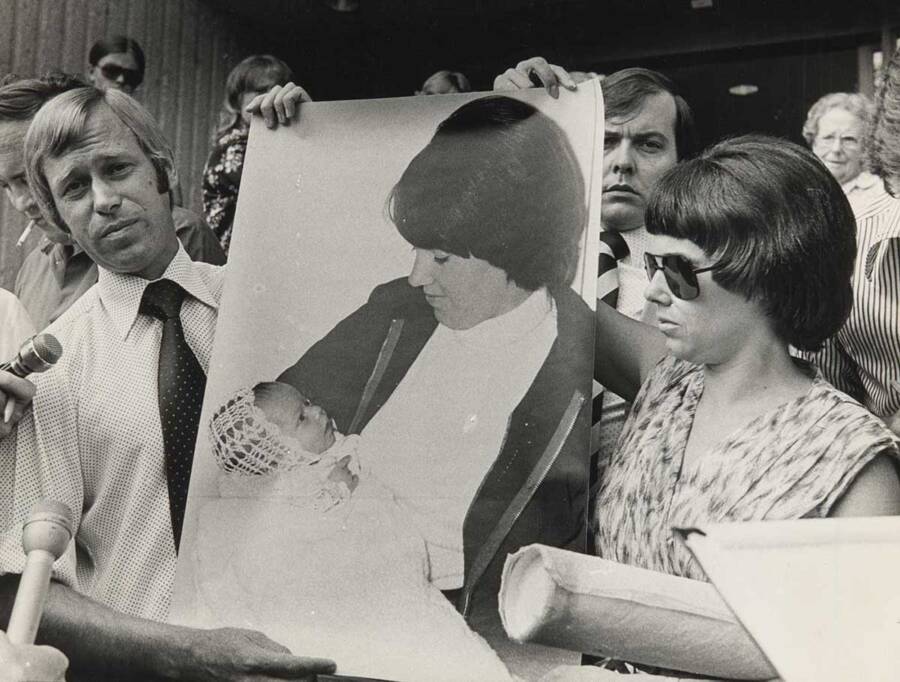
National Museum AustraliaLindy Chamberlain and Michael Chamberlain hold up a photo of their daughter, Azaria, after an initial inquest found that a dingo did indeed take the baby.
Seven months after Azaria Chamberlain disappeared, a coroner’s inquest found that she had, indeed, been taken by wild dingoes. However, the story had started to take on a salacious life of its own.
From the moment that Azaria vanished, speculation about the tragedy ran rampant across Australia. Dingoes were not considered especially dangerous at the time, which caused some to doubt Lindy Chamberlain’s claims. Many focused on Lindy herself, with some critiquing her “sultry good looks” and style, and others claiming that her grief didn’t seem genuine.
“If I smiled, I was belittling my daughter’s death,” Lindy later lamented, according to a 2014 article from The New York Times. “If I cried, I was acting.”
Meanwhile, other rumors had begun circulating about everything from the Chamberlains’ religious beliefs (they were Seventh-day Adventist), to Azaria’s name, which some claimed meant “sacrifice in the wilderness” (it means “God helped”), to the idea that Lindy only dressed her daughter in black (there’s photographic proof to the contrary).
During the first inquest, Coroner Denis Barritt came to the family’s defense. In a televised statement on Feb. 20, 1981, Barritt said: “You have not only suffered the loss of your beloved child in the most tragic circumstances, but you have all been subjected to months of innuendoes, suspicion and probably the most malicious gossip issued in this country.”
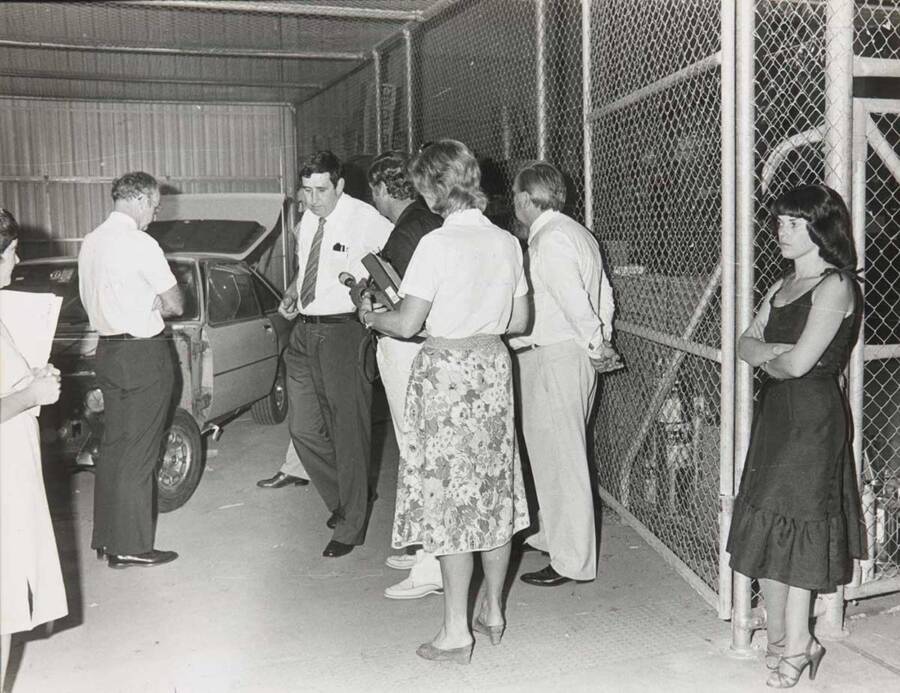
National Museum AustraliaLindy Chamberlain, far right, as investigators examine the family’s car during the second inquest.
But Barritt’s findings weren’t enough.
Not only had public opinion turned against Lindy Chamberlain and her family, but many experts believed that the coroner had gotten Azaria Chamberlain’s death all wrong. In September 1981, the Chamberlains’ house was searched — and in September 1982, Lindy was put on trial for murder (with Michael charged as an accessory after the fact.)
During the so-called “Trial of the Century,” people marched outside the courthouse holding signs that read “The dingo is innocent!” as the Crown lay out its case. It alleged that Lindy had killed Azaria by cutting her throat in the family’s yellow Torana hatchback. They pointed to suspicious marks on Azaria’s clothing, and apparent bloodstains in the family’s car.
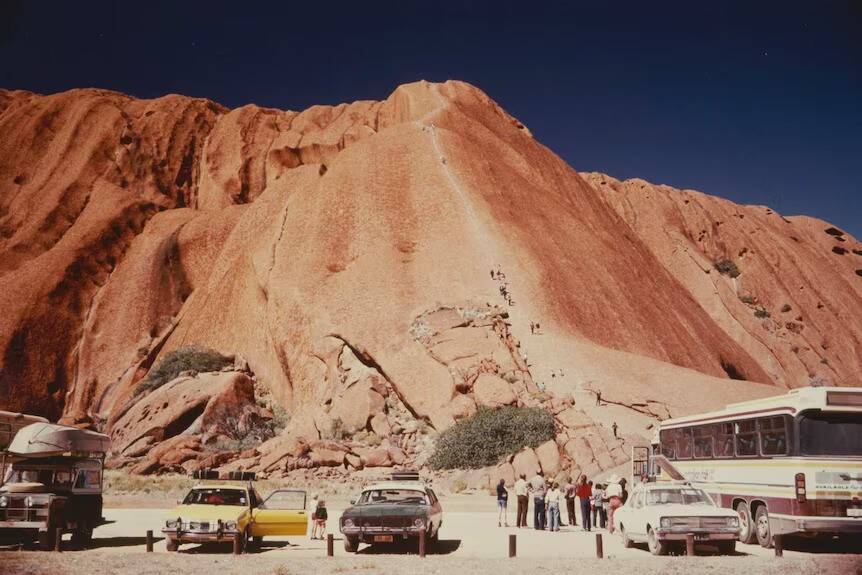
Michael ChamberlainThe Crown alleged that Lindy Chamberlain had killed Azaria Chamberlain in the family’s car, seen here at Uluru on Aug. 17, 1980.
The “dingo ate my baby” excuse, the Crown said, per a court transcript, was “a fanciful lie, calculated to conceal the truth, which is that the child Azaria died by her mother’s hand.”
On Oct. 29, 1982, Lindy Chamberlain — heavily pregnant with her fourth child — was wrongfully convicted of murder and sentenced to life in prison. Michael was given an 18-month suspended sentence.
But in 1986, a chance discovery changed everything.
How A Jacket Changed Lindy Chamberlain’s Life — And The Legacy Of ‘Dingo Ate My Baby’
In 1986, a British backpacker named David Brett set out to climb Uluru. Tragically, Brett suffered a fatal fall. But as police scoured the area, they came upon an unexpected find: a baby’s matinee jacket in an area full of dingo lairs.
Six years previously, Lindy Chamberlain had insisted that Azaria had been wearing a matinee jacket when she vanished; police at the time claimed that it did not exist and that Lindy was lying. The existence of the jacket, as well as the location where it was found, suggested that Lindy had been telling the truth when she screamed that a “dingo ate my baby.”
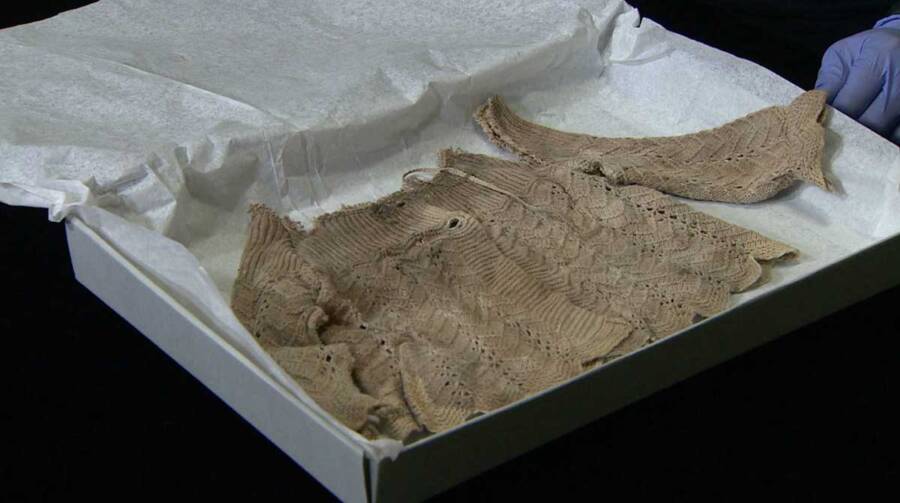
National Museum AustraliaAzaria Chamberlain’s missing matinee jacket was discovered in 1986, and led to the release of Lindy Chamberlain.
On Feb. 7, 1986, Lindy was released from prison.
The inquests that followed turned up further evidence to support her innocence. A royal commission found that the “blood” in the car, for example, was actually bitumen, sound deadener, stains from a milkshake, and copper dust. In 1988, Michael and Lindy Chamberlain were officially exonerated.
Then, in 2012, a fourth inquest into Azaria Chamberlain’s death found that she had been killed by dingoes. Thirty-two years after the nine-week-old had first vanished, a coroner found that “the cause of her death was as the result of being attacked and taken by a dingo.”
To her loved ones, it was long-awaited justice.
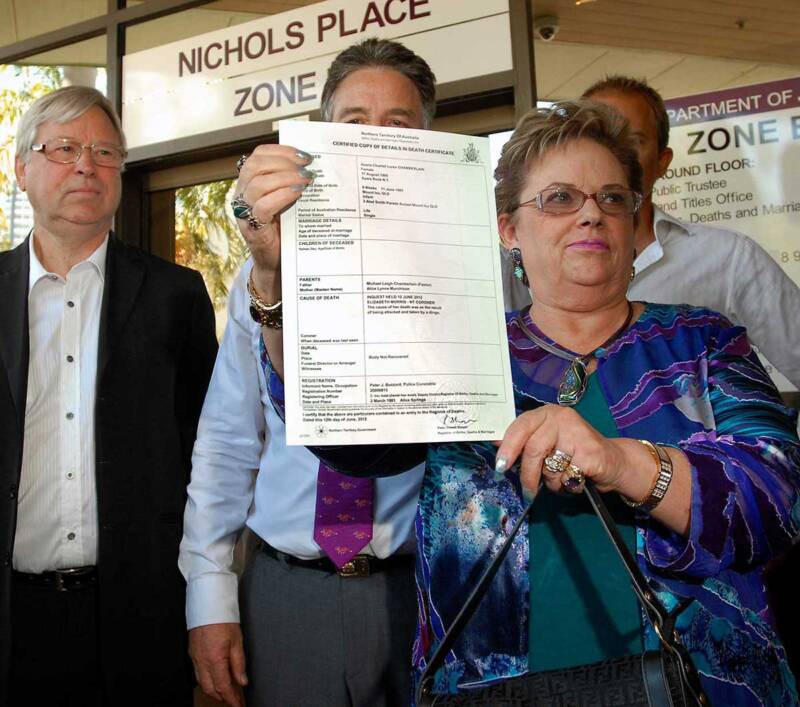
National Museum AustraliaMichael and Lindy Chamberlain, who divorced in 1991, present Azaria Chamberlain’s amended death certificate to the press in 2012.
“This battle to get to the legal truth about what caused Azaria’s death has taken too long,” Michael Chamberlain stated, according to National Museum Australia. “However, I am here to tell you that you can get justice, even when you think that all is lost.”
In the years after Azaria Chamberlain’s death, the line “dingo ate my baby” became an international punchline, and was quoted in TV shows like Seinfeld, Frasier, and The Simpsons.
But after the 2012 inquest, it was clear that Lindy, Michael, Azaria, and the rest of the Chamberlain family had suffered a terrible miscarriage of justice. Rampant speculation, sensational reporting, and speculative evidence had resulted in Lindy’s imprisonment — and the false accusation that she’d murdered her baby back in 1980.
Today, “dingo ate my baby” is more than a punchline. It’s a cautionary tale about how a tragedy can be twisted into something even worse.
After reading about the origins of the phrase “dingo ate my baby,” discover the story of the Somerton Man, the mysterious body found on an Australian beach in 1948. Or, read about Patricia Stallings, the mother who was wrongfully convicted of poisoning her baby with antifreeze.





